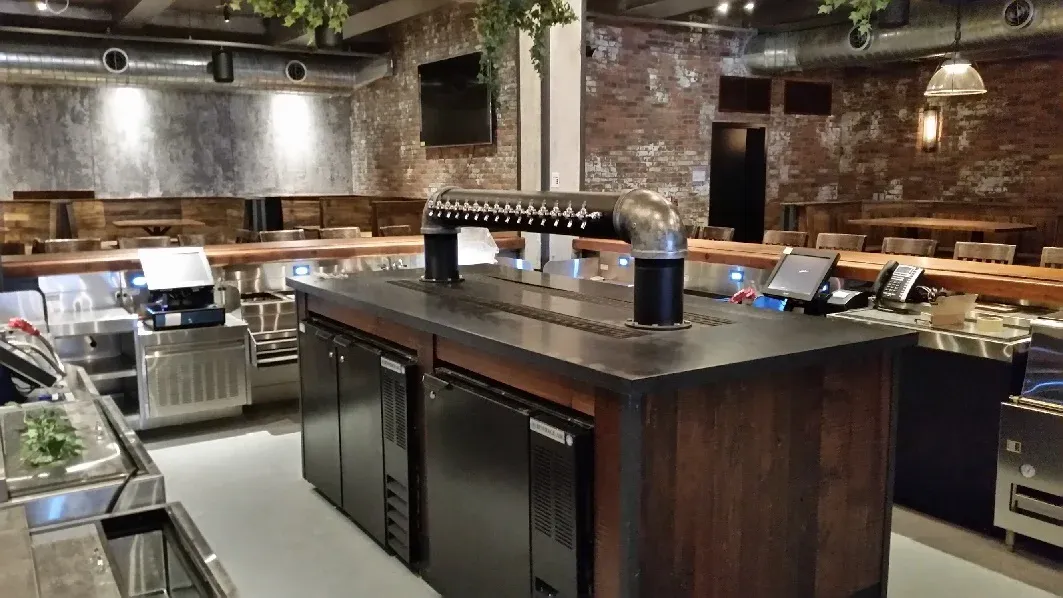Glycol Chillers 101: The Ultimate Guide for Bars and Restaurants
For any bar, brewery, or restaurant that relies on long draw beverage dispensing, keeping drinks at the perfect temperature from keg to tap is not a luxury, it’s a necessity. That’s where glycol chillers come into play.
These compact but powerful machines are the hidden force behind perfectly poured pints, chilled cocktails, and crisp wines on tap. If you’re setting up or upgrading your beverage system, understanding how glycol chillers work, why they matter, and how to install them correctly can make or break the performance of your bar.
In this guide, we’ll walk through what a glycol chiller is, how it works, the different types available, where to install them, and why professional installation and ongoing maintenance are essential for long term success.
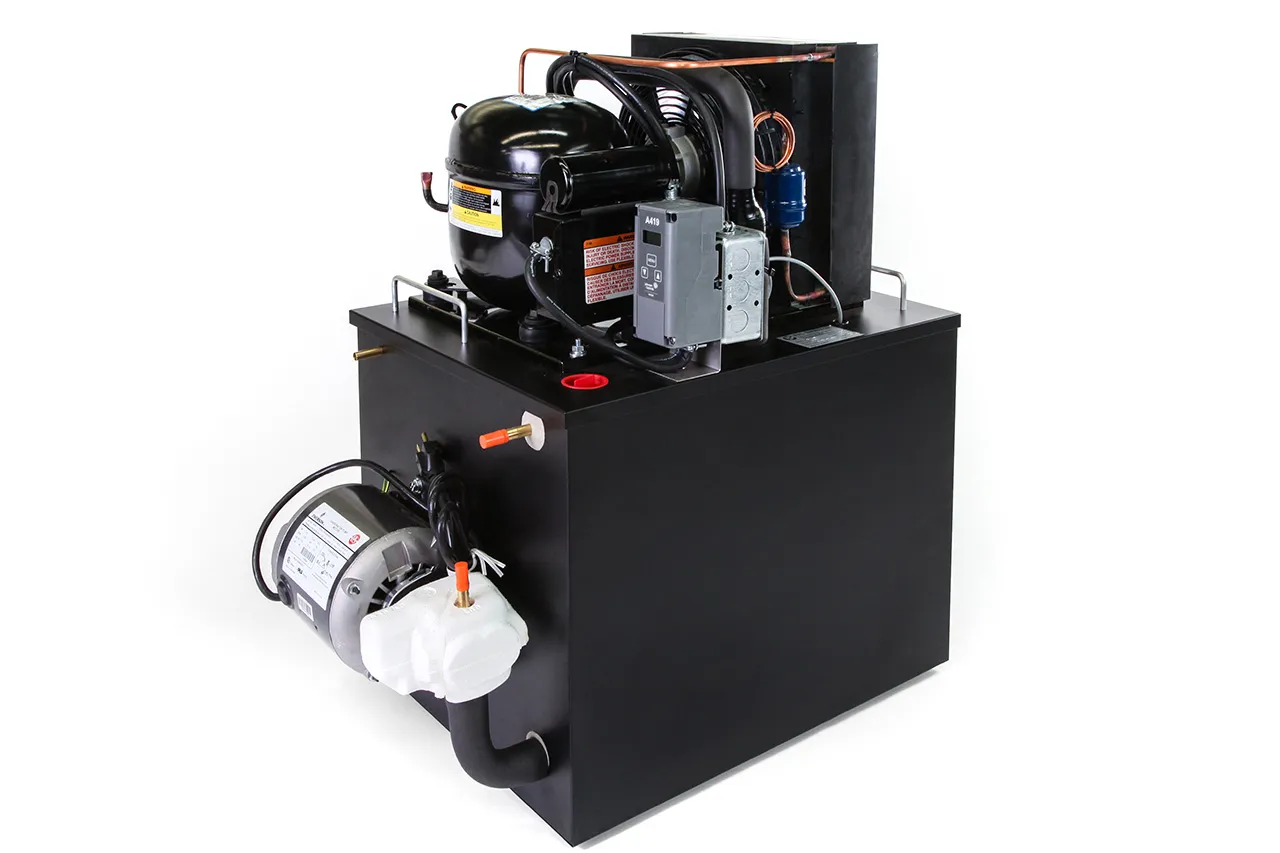
How Does a Glycol Chiller Work?
A glycol chiller is a refrigeration unit that uses a mixture of water and food grade propylene glycol (commonly called “glycol”) to circulate cold fluid through a closed loop system. This cold fluid maintains beverage temperature along the entire length of the trunk line from the cooler to the tap, ensuring every pour comes out cold and consistent.
Here’s a simplified breakdown of the process:
- Cooling the Glycol Mixture: The chiller cools the glycol-water solution to a temperature typically between 26°F and 29°F. This low temperature is essential because it allows the fluid to remain cold without freezing.
- Circulation: The cold glycol mixture is continuously pumped through trunk lines, which also carry the beverage lines. These trunk lines are well-insulated and run from the walk in cooler (where the kegs are stored) to the tap tower at the bar.
- Heat Transfer: As the beverage lines are wrapped around or bundled with the glycol lines inside the trunkline, the cold glycol chills the beverage, keeping it at the perfect serving temperature until it reaches the faucet.
- Return Loop: After traveling to the tower, the glycol returns to the chiller, where it’s cooled again before repeating the cycle.
The result? No matter how far your bar is from your walk in cooler, your beer, wine, coffee, cocktails, or kombucha pours as cold and fresh as if it were just tapped from a keg right beneath the bar.
Why It’s Important to Maintain a Glycol Chiller
- Prevent Downtime: Routine inspections can help you catch problems like low fluid levels, clogged filters, or pump failure before they lead to complete system shutdowns.
- Extend Equipment Life: Well maintained chillers can last for 10 years or more. Neglecting upkeep can drastically shorten this lifespan.
- Consistent Product Quality: Fluctuating temperatures from a poorly maintained chiller can affect flavor, carbonation, and presentation of drinks. Your brand suffers when your product doesn't taste right.
- Safety & Sanitation: Dirty coils, stagnant glycol, and blocked fans can create a breeding ground for bacteria or mold. Scheduled cleaning helps avoid health hazards.
- Energy Efficiency: A clogged filter, dirty condenser, or incorrect glycol ratio can force your chiller to work harder, increasing your power bills.
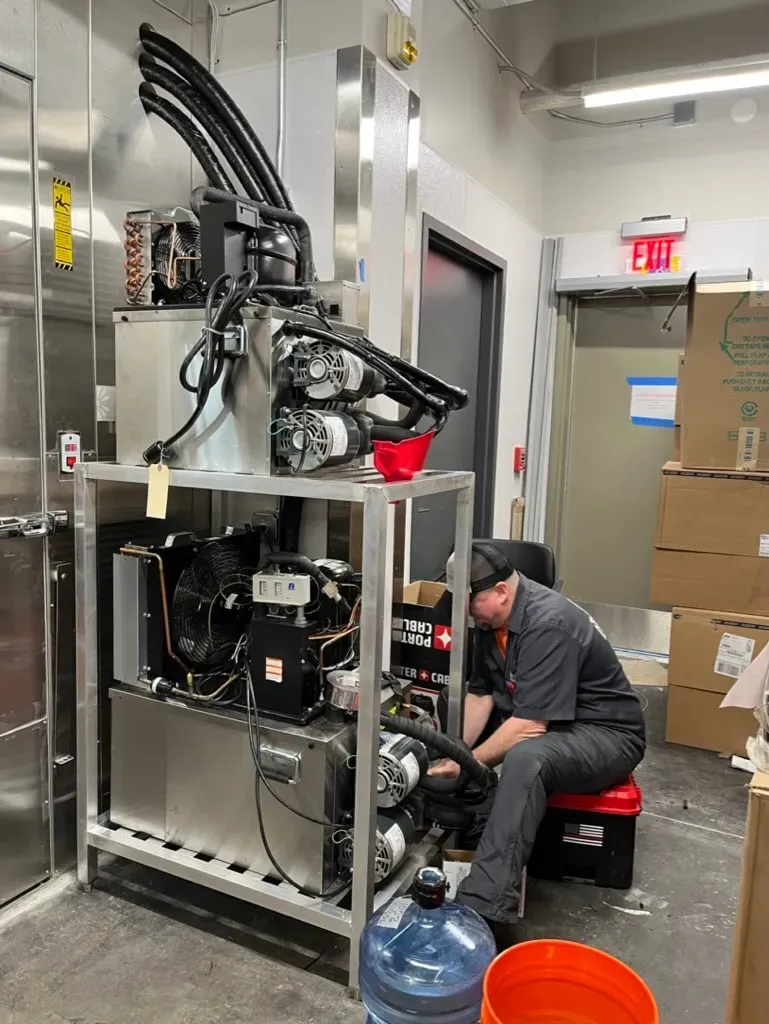
Maintenance Tips:
- Check glycol levels monthly and top off with the correct glycol-to-water ratio
- Clean filters and condenser coils every 2 to 3 months
- Inspect trunk lines and pumps at least quarterly
- Have a licensed technician service the system annually
At Liquid Cheers, we can connect you with trusted maintenance providers across the United States to help ensure your glycol system runs smoothly year-round.
Types of Glycol Chillers: Air-Cooled vs. Water-Cooled
Not all glycol chillers are built the same. When designing your beverage system, one of the biggest decisions you’ll face is whether to use an air cooled or water cooled unit. Each has distinct advantages depending on your space, utility setup, and cooling needs.
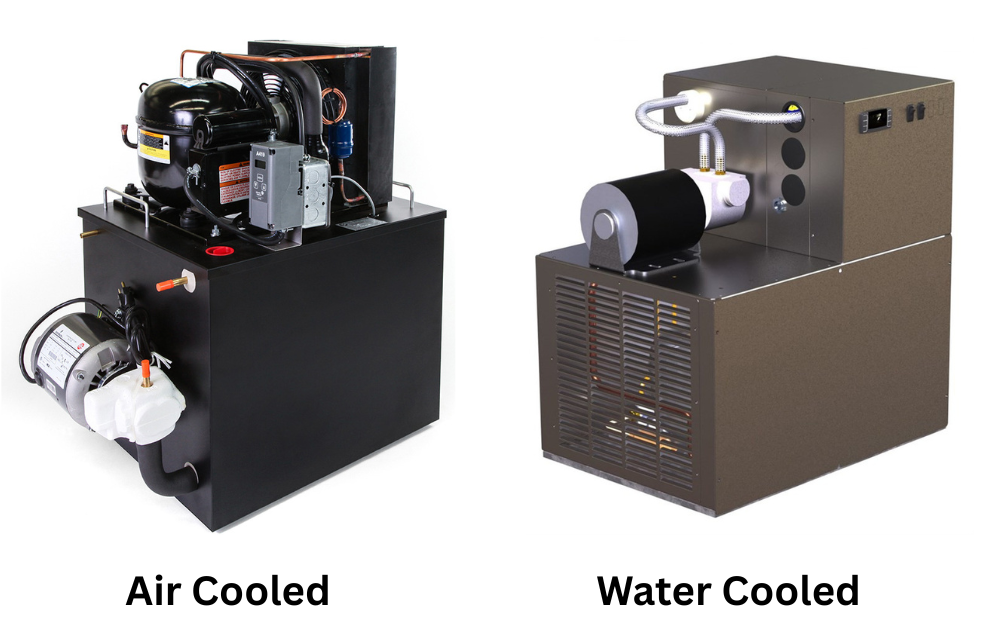
Air-Cooled Glycol Chillers
These are the most common type found in bars, restaurants, and breweries.
How They Work: Air cooled chillers expel heat from the condenser coil using fans and ambient air. The warm air is pushed out into the room or vented to the outside.
Pros:
- Easier to install
- Lower upfront costs
- Ideal for locations with good ventilation
Cons:
- Generates heat in the surrounding area
- Less efficient in hot or poorly ventilated spaces
Best For: Most standard bar and restaurant applications where you can ensure adequate airflow.
Water-Cooled Glycol Chillers
These systems use water (typically from a city water line or closed loop cooling tower) to remove heat from the chiller’s condenser.
Pros:
- Extremely quiet
- More efficient in tight, hot, or enclosed environments
- No heat is expelled into the room
Cons:
- Higher initial and operating costs
- Requires water supply and drainage infrastructure
Best For: Environments with poor ventilation, high heat loads, or facilities with an existing water recirculation system.
Where to Install a Glycol Chiller
Installing your glycol chiller in the right location is just as important as choosing the right model. The chiller needs adequate airflow, accessible maintenance access, and proximity to your walk in cooler and beverage lines.
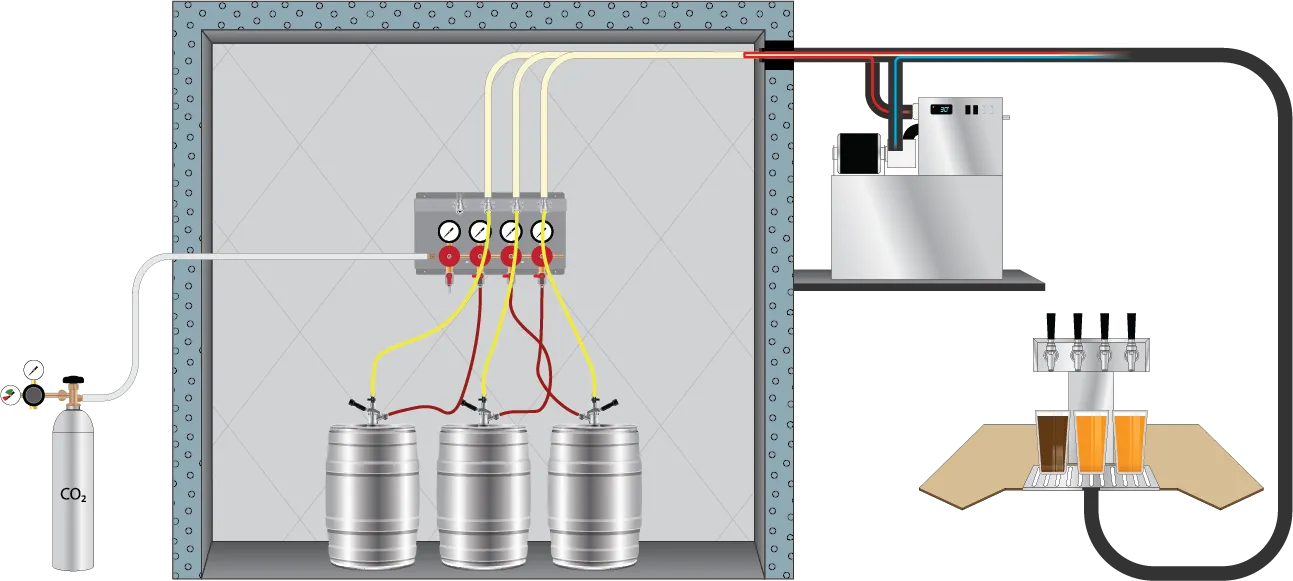
General Guidelines:
- Airflow Clearance: For air cooled units, ensure at least 12 inches of clearance on all sides for proper ventilation. Never install the chiller in a confined or sealed room without exhaust ventilation. Poor airflow can cause the unit to overheat and fail.
- Level Surface: Place the chiller on a solid, level surface to avoid vibration and ensure stable pump operation.
- Ambient Temperature: Install in a room that stays between 50°F and 90°F. Excessive heat or cold can reduce performance.
- Distance from Cooler: Try to position the chiller as close as possible to the walk in cooler or beverage start point to minimize line length and energy usage.
- Noise Considerations: Air cooled chillers do produce some fan noise, so avoid installing them in dining areas or behind customer-facing walls if possible.
Common Install Locations:
- Equipment rooms
- Back of house utility areas
- Mechanical mezzanines
- Underneath stairs (with proper ventilation)
- Dedicated service closets
Liquid Cheers offers consultation support to help layout your back of house setup properly, ensuring your chiller and trunk lines are optimally positioned from the start.
Why You Need a Qualified Installer
Glycol chillers may sound simple, but improper installation can cost you thousands in wasted beer, lost efficiency, and premature equipment failure. To get the most out of your investment, it’s critical to have your glycol chiller installed by a trained, qualified technician.
Here’s Why:
- Correct Setup: A professional installer will ensure your glycol mixture is properly balanced, the chiller is leveled, and the trunk line loop is tight and efficient.
- Pump Calibration: Pumps need to be selected and tuned based on your line length, number of faucets, and tower height. This is not a one size fits all configuration.
- Electrical & Plumbing: Glycol chillers require dedicated circuits and sometimes drainage for condensation. An experienced installer can ensure compliance with local electrical and plumbing codes.
- No Leaks or Line Damage: Trunk line handling and sealing is delicate work. Kinks, crushed insulation, or loose fittings can reduce performance and introduce costly leaks.
- Warranty Compliance: Most manufacturers require professional installation for warranty coverage. DIY jobs can void coverage, leaving you with full responsibility for any failures.
Liquid Cheers has a national network of certified glycol chiller installers and beverage system contractors who can handle projects from coast to coast. We’ll help connect you to the right team for your bar, brewery, or restaurant.
Final Takeaways
A glycol chiller may not be the most glamorous part of your bar setup, but it’s one of the most important. When properly selected, installed, and maintained, a glycol chiller keeps your beverages flowing cold, fresh, and foam free from the first pour to the last.
Whether you’re opening a new bar, retrofitting a restaurant, or expanding your tap offerings, consider your glycol chiller the beating heart of your long draw system. Don’t cut corners on installation, and don’t forget to maintain it regularly. Doing so not only protects your beverage quality but also protects your bottom line.
At Liquid Cheers, we’re here to help with everything from system planning and product selection to installer recommendations and maintenance advice. Contact us today to get expert guidance and equipment that performs as hard as you do.

